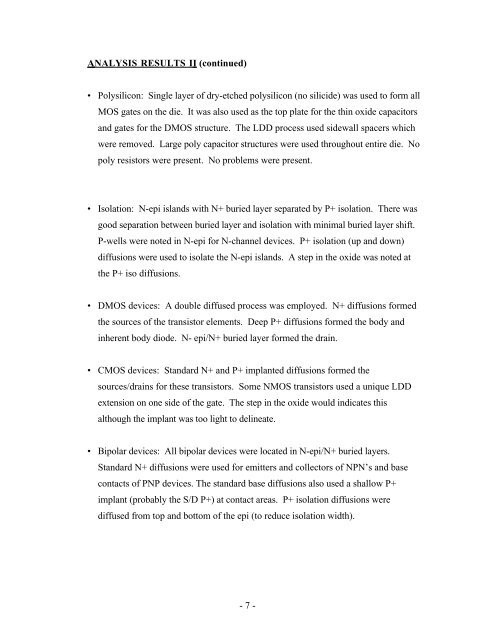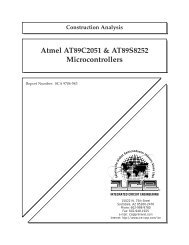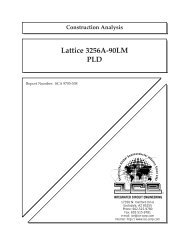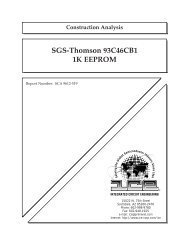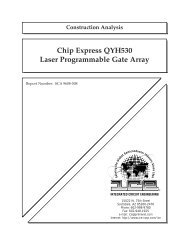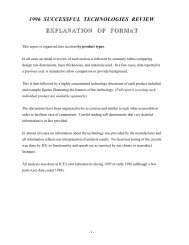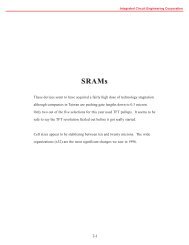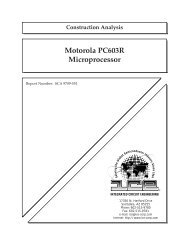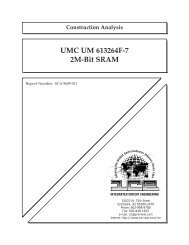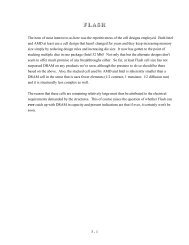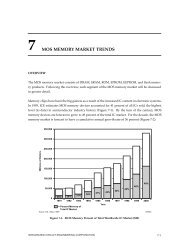ICE Shared Construction Analysis SCA 9712-570 - Smithsonian ...
ICE Shared Construction Analysis SCA 9712-570 - Smithsonian ...
ICE Shared Construction Analysis SCA 9712-570 - Smithsonian ...
Create successful ePaper yourself
Turn your PDF publications into a flip-book with our unique Google optimized e-Paper software.
ANALYSIS RESULTS II (continued)<br />
• Polysilicon: Single layer of dry-etched polysilicon (no silicide) was used to form all<br />
MOS gates on the die. It was also used as the top plate for the thin oxide capacitors<br />
and gates for the DMOS structure. The LDD process used sidewall spacers which<br />
were removed. Large poly capacitor structures were used throughout entire die. No<br />
poly resistors were present. No problems were present.<br />
• Isolation: N-epi islands with N+ buried layer separated by P+ isolation. There was<br />
good separation between buried layer and isolation with minimal buried layer shift.<br />
P-wells were noted in N-epi for N-channel devices. P+ isolation (up and down)<br />
diffusions were used to isolate the N-epi islands. A step in the oxide was noted at<br />
the P+ iso diffusions.<br />
• DMOS devices: A double diffused process was employed. N+ diffusions formed<br />
the sources of the transistor elements. Deep P+ diffusions formed the body and<br />
inherent body diode. N- epi/N+ buried layer formed the drain.<br />
• CMOS devices: Standard N+ and P+ implanted diffusions formed the<br />
sources/drains for these transistors. Some NMOS transistors used a unique LDD<br />
extension on one side of the gate. The step in the oxide would indicates this<br />
although the implant was too light to delineate.<br />
• Bipolar devices: All bipolar devices were located in N-epi/N+ buried layers.<br />
Standard N+ diffusions were used for emitters and collectors of NPN’s and base<br />
contacts of PNP devices. The standard base diffusions also used a shallow P+<br />
implant (probably the S/D P+) at contact areas. P+ isolation diffusions were<br />
diffused from top and bottom of the epi (to reduce isolation width).<br />
- 7 -


